A Diet Book For Cats
Dena Harris, Does This Collar Make My Butt Look Big?
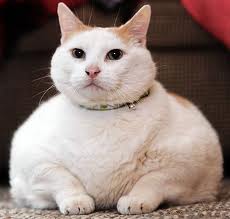 The very amusing Dena Harris joins us as she parodies all the self-help diet books with tips to reduce the fat in your cat and turn them into a lean, mean, sleeping machine. You'll hear purr-actical tips like, eat whatever you want; just throw it up at 3am right in the middle of the bedroom floor! Also, pooping or retching out most of your calories.
The very amusing Dena Harris joins us as she parodies all the self-help diet books with tips to reduce the fat in your cat and turn them into a lean, mean, sleeping machine. You'll hear purr-actical tips like, eat whatever you want; just throw it up at 3am right in the middle of the bedroom floor! Also, pooping or retching out most of your calories.
Dena states that she has 2 fat cats. This is her 4th cat book, so everyone looks to her as an expert on cat health and diet. However, she admits that her cats are embarrassingly obese. Obviously, they haven't read her book! She also admits that she is allergic to cats – go figure!
Dena's book is a parody of all of the diet and health books for humans. It is tongue-in-cheek on how to get your cat to lose weight, than it is actual diet tips. There is a chapter on body cleanses for cats and exercises on how many calories a cat can burn while climbing up and down the screen door.
 Americans own more than 86 million cats, and the wild popularity of cat videos, from YouTube to the Internet Cat Video Film Festival, proves that cat-lovers can't get enough kitty humor. This book pokes fun at tubby tabbies--the world's cutest (and surliest) fat creatures, with laugh-out-loud details that will tickle the funny bone of anyone "owned" by a cat.
Americans own more than 86 million cats, and the wild popularity of cat videos, from YouTube to the Internet Cat Video Film Festival, proves that cat-lovers can't get enough kitty humor. This book pokes fun at tubby tabbies--the world's cutest (and surliest) fat creatures, with laugh-out-loud details that will tickle the funny bone of anyone "owned" by a cat.
Lampooning trendy weight-loss regimes and health gurus, this book will also make people feel better about their own battle of the bulge in comparison to cats' insatiable appetites and lazy lifestyles. By eating right for their blood type, sourcing raw and living foods, joining Weight Stalkers, avoiding toxic treats, and exercising while lying down, felines of every shape (round) and size (round) will soon be motivated to ditch the fifth serving of Beef Morsels in Gravy for fresh, local options like that vole in the backyard.
http://www.denaharris.com
Searching for The Dead
Cat Warren, What The Dog Knows
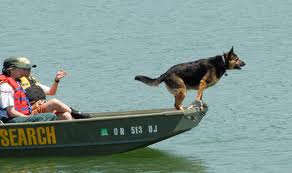 Cat Warren trains cadaver dogs to look for dead bodies. How does she do it? And just how good is your dog's nose? So good they can sniff a corpse at the bottom of a lake for 100 years. Would "Ladybug" the Animal Radio® Stunt Dog be good as a cadaver dog? She likes rolling in dead stuff!
Cat Warren trains cadaver dogs to look for dead bodies. How does she do it? And just how good is your dog's nose? So good they can sniff a corpse at the bottom of a lake for 100 years. Would "Ladybug" the Animal Radio® Stunt Dog be good as a cadaver dog? She likes rolling in dead stuff!
Cat Warren is a university professor and former journalist with an admittedly odd hobby: She and her German Shepherd, Solo, have spent the last seven years searching for the dead. Solo is a cadaver dog. What started as a way to harness Solo's unruly energy and enthusiasm soon became a calling that introduced her to the hidden and fascinating universe of working dogs, their handlers, and their trainers.
A cadaver dog is a dog that goes out and tries to find someone who is missing and is presumed dead. Their only job is to pick up the scent of human remains and alert their handler.
To train these dogs, you would ideally want to use items that they would be searching for. These so called training items vary from state to state. Cat lives in North Carolina, where she states they have reasonable laws about items that can be used for training. For example, she has teeth, bone and dirt from underneath a decomposing body. Cat tells us in some states, you are not allowed to have these training materials, leaving some handlers to train with pseudo-scent.
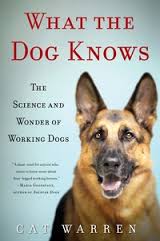 It's easy to image these training items hidden for these dogs to find on land, but how do you train them to search in the water? Cat explains it the same for dogs. Once someone is gone in the water, they will decompose just as they would on land. This means that they are sending up gasses and oils to the surface of the water. Cat has seen dogs train on items placed in 200 feet of water, which is the equivalent of an 11-story building.
It's easy to image these training items hidden for these dogs to find on land, but how do you train them to search in the water? Cat explains it the same for dogs. Once someone is gone in the water, they will decompose just as they would on land. This means that they are sending up gasses and oils to the surface of the water. Cat has seen dogs train on items placed in 200 feet of water, which is the equivalent of an 11-story building.
Large dogs make the best cadaver dogs, as you need a dog that can cover great distances. You also need a dog that has high energy and wants to work for a reward and has a great nose.
In her book, What The Dog Knows, Cat interviews cognitive psychologists, historians, medical examiners, epidemiologists, forensic anthropologists, as well as the breeders, trainers, and handlers who work with and rely on these remarkable and adaptable animals daily. Along the way, Warren discovers story after story that proves the remarkable capabilities, as well as the very real limits, of working dogs and their human partners. Clear-eyed and unsentimental, Warren explains why our partnership with working dogs is woven into the fabric of society, and why we keep finding new uses for the working dog's wonderful nose.
http://www.catwarren.com
 The Dogfather's Grooming Tip with Joey Villani
The Dogfather's Grooming Tip with Joey Villani
Smelly Cats
Do you have a smelly cat when he leaves the litter box? If you have a cat, you know how bad cat urine smells, and if the smell is on your cat, watch out!
Cat urine is very acidic, as most urine is. You need to break it down, and there are two household products that you probably have at home that can do this very easily. These two products are white vinegar and baking soda.
If your cat likes to be brushed, try using the baking soda. Just sprinkle it all over your cat and brush it through. This will alkaline the acids and take the smell away rather quickly.
 If your cat won't let you brush them, try using a mixture of 50% white vinegar to 50% water. Just mix the ingredients in a spray bottle, spray it on your cat, and let it dry.
If your cat won't let you brush them, try using a mixture of 50% white vinegar to 50% water. Just mix the ingredients in a spray bottle, spray it on your cat, and let it dry.
Baking soda also works great on urine in you carpet. Use it heavily, like you would carpet fresh. Just sprinkle it on your carpet and move it around to make sure it penetrates the carpet, then vacuum it up. But once the urine has penetrated the carpet and is down into the padding, there is not much you can do. But if there is just a small area where they spot now and then, this should work well. If the urine has dried, you might have to dampen the spot slightly beforehand.
Animal Radio® News with Stacey Cohen
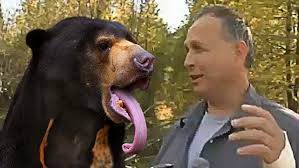 Man Grabs Bear's Tongue And Survives
Man Grabs Bear's Tongue And Survives
A man in Canada claims grabbing a bear's tongue may have actually saved his life. Gilles Cyr said he was walking through the woods near Grand Falls, New Brunswick when the black bear attacked. He says it was on top of him before he knew it with a mouth full of teeth wide open in front of his face. Gilles says he instinctively grabbed the animal's tongue, thinking, "If you're going to hurt me, I'm going to hurt you too." Gilles managed to escape the struggle and hide behind a tree, but not before suffering scratches on his stomach and a bite wound on his knee. He was treated for superficial wounds at a nearby hospital.
Circovirus Found In Dogs
A virus that was once thought to affect only pigs and birds is now being found in dogs. Dogs in Ohio, California and southeast Michigan have been getting sick, and in some cases dying, due to a virus called the circovirus. Because the symptoms are similar to other common viruses seen in dogs, veterinarians like Dr. Craig Brakeman at the Banfield Pet Hospital believe dogs may not be getting tested for circovirus. He said pet owners don't need to be worried about the virus just yet, but should use "common sense" and should educate themselves on what to look out for. He suggests making sure your dog is up to date on vaccines.
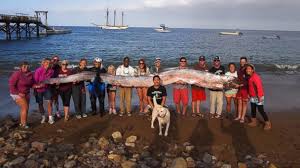 18-Foot-Fish Discovered
18-Foot-Fish Discovered
A snorkeler's discovery of a carcass of a strange looking creature is spawning tales of sea serpents off the Southern California coastline. Jasmine Santana, an instructor at the Catalina Island Marine Institute, came across the 18-foot-long oarfish. It took 15 people to carry the long, snake-like body out of the water. The rarely seen fish can grow to lengths of up to 50 feet. They're believed to be the basis for tales of sea serpents and dragons in the times of ancient mariners.
Pet Insurance Now Offers Hereditary and Congenital Coverage
Cats and dogs in nearly 30 states are now eligible for full hereditary and congenital coverage from Pets Best Insurance. The Boise, Idaho, insurer rolled out the expanded basic coverage recently, joining competitors such as Embrace Pet Insurance that offer similar programs. Hereditary and congenital coverage is a relative newcomer to the insurance field. Accident, illness and wellness plans are most common types offered, according to the North American Pet Health Insurance Association. "While Pets Best has always offered coverage for common breed-specific conditions such as Wobbler syndrome, intervertebral disc disease and cherry eye, we recognized the value of expanding our Best Benefit plans,” said Jack Stephens, DVM, president and founder of Pets Best. "Many hereditary and congenital conditions require ongoing veterinary treatment to improve pets' quality of life, which is why we sought to provide pet owners with the most comprehensive, straightforward and affordable coverage possible.”
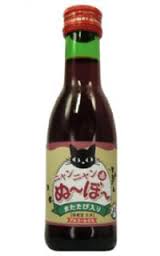 Wine For Cats
Wine For Cats
Wine drinkers in Japan can now share a glass with their feline friends. According to Kotaku.com, the pet products company B&H Lifes is releasing a wine for cats called "Nyan Nyan Nouveau." Apparently, in Japanese "Nyan Nyan" refers to a cat's meow. While the wine doesn't actually contain any alcohol, it is made from Cabernet grapes. It is also blended with Vitamin C and catnip for a mixture that supposedly tastes similar to red wine. The limited edition wine will set purchasers back four dollars.
Injured Kangaroo Hops To Pharmacy
Officials at Australia's Melbourne Airport recently cornered and captured a kangaroo inside the facility's pharmacy. According to The Age, an airport spokeswoman said the animal made its way inside after a vehicle outside the building injured it. The kangaroo managed to get to the second floor and hop into the pharmacy before volunteers from Wildlife Victoria were able to able to capture and sedate it. The rescuers said the animal was taken to a veterinarian to be examined.
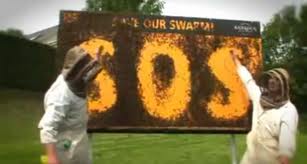 Hardest Agricultural Workers In Crisis
Hardest Agricultural Workers In Crisis
Some of the hardest workers in the California agricultural industry are in crisis. California's 4-billion-dollar almond orchards are dependent on bees pollinating the trees, but Honeybee expert Dennis van Engelsdorp says over the years bees have been steadily dying. He told a California committee there's various reasons bees are dying. They include pesticides and a mite that sucks bees' blood and spreads viruses throughout their colonies.

NEWS UPDATE brought to you by Drs. Foster & Smith, affordable pet supplies. Low prices every day, so you save on every order.
 Listen to the entire Podcast of this show (#726)
Listen to the entire Podcast of this show (#726)





